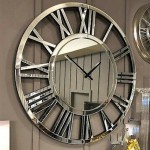```html
Antique French Sunburst Mirrors: History, Design, and Value
Antique French sunburst mirrors represent a significant element of French decorative arts, spanning several centuries and encompassing diverse styles. Characterized by radiating elements mimicking the rays of the sun, these mirrors transcend mere functionality, functioning as potent decorative statements that add light, drama, and a touch of historical elegance to any space. Understanding their origins, distinctive design features, and market considerations is essential for collectors, interior designers, and anyone interested in acquiring a piece of this timeless artistry.
The Historical Context of Sunburst Mirrors
The genesis of the sunburst motif in decorative arts can be traced back to ancient cultures where the sun was revered as a source of life, power, and divinity. In ancient Egypt, the sun god Ra was a central figure in the pantheon, and solar imagery permeated art and architecture. Similarly, in other ancient civilizations, the sun held symbolic importance, leading to its incorporation into various forms of artistic expression.
Within the context of European art, the sunburst motif gained prominence during the Baroque era (roughly the 17th and 18th centuries). This period was characterized by opulence, grandeur, and a theatrical aesthetic. The image of the sun, often associated with royalty and divine right, became a favored symbol displayed in palaces, churches, and other significant buildings. The reign of Louis XIV, the "Sun King," in France solidified the sunburst as a representation of power and absolute authority.
However, sunburst mirrors as we recognize them today began to emerge more prominently during the 19th century, particularly in France. This period saw a resurgence of interest in historical styles, including Baroque and Rococo, leading to the adaptation of the sunburst motif for decorative objects intended for domestic use. The mirrors offered a way to incorporate a touch of aristocratic elegance into more bourgeois homes.
The industrial revolution played a vital role in the wider availability of these mirrors. Advancements in glass production and metalworking techniques made it possible to mass-produce mirrors and their components at a lower cost. This allowed the sunburst mirror, previously a luxury item, to become more accessible to a broader segment of the population.
Design Elements and Variations
Antique French sunburst mirrors exhibit a remarkable range of design variations, reflecting different artistic periods and regional styles. Certain core features remain consistent, but the execution of these features can vary considerably, influencing the overall aesthetic of the mirror.
The central element is, of course, the radiating "rays" emanating from the central mirror. These rays can be crafted from a variety of materials, including gilded wood, wrought iron, brass, composite materials like papier-mâché, or even repurposed everyday objects like cutlery. The shape and arrangement of the rays are also subject to considerable variation. Some mirrors feature straight, uniform rays, while others incorporate more elaborate, curved, or textured designs. Rays could be simple and minimalist, or ornate and highly detailed, often incorporating floral motifs, scrollwork, or geometric patterns.
The mirror itself is typically round, but oval or other geometric shapes can also be found. The size of the central mirror can also vary significantly, affecting the overall visual impact of the piece. The mirror's glass may show age-related imperfections, such as foxing (dark spots caused by oxidation of the silver backing), which, in some cases, adds to the mirror's character and authenticity.
The frame surrounding the rays can also contribute significantly to the overall design. Some mirrors feature elaborate frames adorned with carvings, moldings, or other decorative elements. Others have simpler, more understated frames that allow the rays to take center stage. Materials used for the frame often complement the rays and central mirror.
Gilding is a common decorative technique used on sunburst mirrors, particularly those made of wood or composite materials. Gilding involves applying a thin layer of gold leaf to the surface of the mirror, creating a lustrous, reflective finish. The type of gilding used (e.g., water gilding, oil gilding) and the level of detail in the gilding can vary considerably, influencing the mirror's value and aesthetic appeal. Over time, the gilding may develop a patina, adding to the mirror's antique character. Painted finishes, often in shades of white, cream, or pastel colors, are also found, offering a softer, more understated aesthetic.
Regional variations within France also influenced the design of sunburst mirrors. Mirrors produced in Paris, for example, might exhibit a more refined, sophisticated aesthetic, while those produced in rural areas might feature a more rustic, folk-art style. Identifying the region of origin can sometimes provide insights into the mirror's history and craftsmanship.
Factors Influencing Value and Authenticity
Determining the value of an antique French sunburst mirror requires careful consideration of several factors. These factors include the mirror's age, condition, materials, craftsmanship, provenance (history of ownership), and overall aesthetic appeal.
Age is a significant factor, with older mirrors generally commanding higher prices. Accurately dating a sunburst mirror can be challenging, but clues can be gleaned from the materials used, the manufacturing techniques employed, and the overall style of the piece. Experts often rely on stylistic analysis, examining design elements such as the shape of the rays, the type of frame, and the decorative motifs used to determine the mirror's likely period of origin. Original paperwork or markings, while rare, can provide definitive proof of age.
The condition of the mirror is another crucial consideration. Mirrors in good condition, with minimal damage or repairs, are generally more valuable than those with significant flaws. However, some degree of wear and tear is to be expected in antique items, and a certain amount of patina can actually enhance the mirror's character. Significant damage, such as broken rays, cracked glass, or missing pieces, can detract from the mirror's value. Any repairs or restorations should be carefully evaluated to ensure they are appropriate and do not compromise the mirror's authenticity or aesthetic integrity.
The materials used in the mirror's construction also play a role in its value. Mirrors made of high-quality materials, such as solid wood, wrought iron, or hand-blown glass, are generally more valuable than those made of less expensive materials. The presence of precious metals, such as gold or silver, can also significantly increase the mirror's value. The quality of the materials reflects the skill and attention to detail of the original maker.
Craftsmanship is another important factor. Mirrors that exhibit exceptional craftsmanship, with intricate details, precise joinery, and a high level of finish, are generally more valuable than those that appear crudely made. The level of skill and artistry evident in the mirror's construction is a key indicator of its quality and value.
Provenance, or the history of ownership, can also influence the mirror's value. Mirrors with a documented history, particularly those that have been owned by notable figures or have been featured in significant collections, may command higher prices. Provenance provides context and adds to the mirror's story, making it more desirable to collectors.
Finally, the overall aesthetic appeal of the mirror is a subjective but important factor. Mirrors that are visually striking, well-proportioned, and representative of a particular style or period are generally more sought after. The mirror's ability to enhance a space and evoke a sense of historical elegance contributes to its overall value.
Determining authenticity requires careful examination and, in some cases, expert appraisal. Signs of age and wear, such as patina, minor imperfections, and evidence of handcrafting, can be indicators of authenticity. However, these signs can also be faked, so it is important to be cautious and to seek expert advice when necessary. Comparing the mirror to known examples of similar pieces can also help to assess its authenticity. Looking for tell-tale signs of machine-made construction on elements that should be hand-crafted (in particular, the rays) can also give an idea of authenticity and age.
Acquiring an antique French sunburst mirror represents an investment in a piece of history and artistry. By understanding the historical context, design elements, and factors influencing value, collectors and enthusiasts can make informed decisions and appreciate the enduring appeal of these captivating decorative objects.
```
Vintage French Sunburst Starburst Gilt Mirror 1960 Mid Century Modern

Vintage French Sunburst Mirror

Early 20th Century French Gilt Wood Sunburst Mirror Lennox Cato Antiques

Mid Century French Sunburst Mirror In Gold 1950s For At Pamono

1960s French Gilded Sunburst Mirror 19¼ Chez Pluie

Mid Century French Sunburst Mirror In Gold 1950s For At Pamono

Large Mid Century French Sunburst Mirror With Convex Glass Decorative Antiques

This Item Is Unavailable Sunburst Mirror Vintage Mirrors House

Gold Sunburst Mirror Antique Vintage Sun Giltwood Wall Starburst French

French Gold And Silver Gilt Starburst Or Sunburst Mirror Diameter 21 For At 1stdibs Vintage








